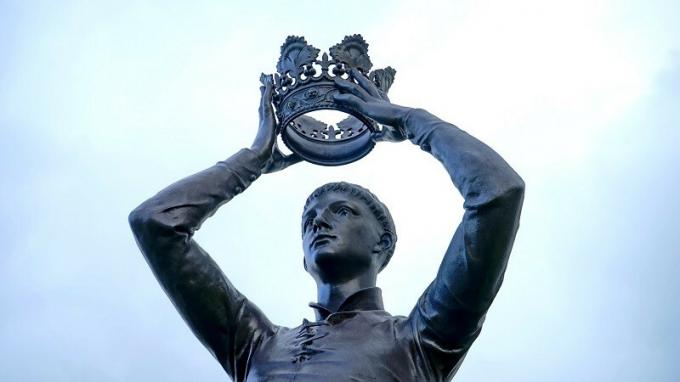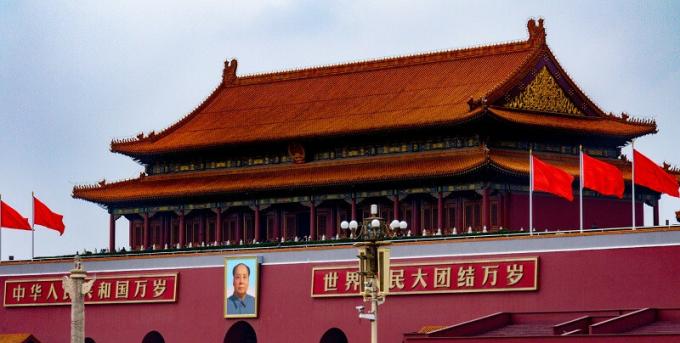The 16 types of State (classified and explained)
In the world there are many different systems of governing countries. There are monarchies and republics, centralized countries and decentralized countries, full democracies and dictatorships ...
The types of state that we can find in the world are very diverse, but most are found in one of the following 16 typologies that we are going to discover below. Go for it.
- Related article: "What is Political Psychology?"
The 16 types of State and their characteristics
The state is a political concept that refers to the social, political and economic organization of a society. For a region of the world to be considered as a sovereign state, in addition to being recognized as such, It must have the following three elements: a delimited territory, a population and institutions.
One of the first to speak of the state was the Italian philosopher Nicolás Machiavelli, who used this term to designate the political organization. From that moment on, the concept has expanded its meaning, making reference to various structures of power and dominance that are considered as the legitimate holders of power over a certain extension of land.
In the theory of the social contract, the state is spoken of as a kind of agreement that people make individually, constituting an association which differs from the institution of government. Max weber it also treats the state as an association, but differs from the theory of the social contract considering that it is an agreement reached by a group of people that imposes itself on other groups in society, implying in one way or another the benefit of some and the oppression of others.
Throughout history there have been multiple forms of state. In fact, we could say that each country has its own, since each nation has had its own particular social, demographic, economic and political characteristics, which influence the way in which they have been organized. But despite this, they can all be grouped into categories that share common features and are organized according to various criteria.
1. According to the territorial model
According to the territorial model of the state, that is, to what degree of autonomy have the regions that compose it or to what extent the capital decides all aspects of the state, we speak of:
1.1. Centralized state
In a state with a centralized territorial model we can find that it is the central government that has practically all the powers, leaving very little decision-making capacity to their administrative regions. It is a model state in which all aspects of the executive, legislative and judicial power are decided in the capital.
Municipalities, comarcas, provinces, departments or any other intrastate subdivision are almost completely subordinate to the central power. In fact, its rulers and officials are appointed practically from the state capital and there is only one legal system for the entire territory.
Examples of centralized states are France, Portugal, and the Vatican City.

1.2. Federal state
The states with a federal-type territorial model are made up of several states with considerable autonomy. Practically, these states are sovereign and free, almost independent from the central government but linked to a federal entity that makes up the country.
These states have a high degree of political decentralization, radically opposed to the unitary states because the federative entities come to decide practically everything. Each state has its own laws, taxes, education system, police, nationality... They have judicial and legislative autonomy, although always subject to the federal constitution.
Germany, the United States and Russia are examples of this type of state.
1.3. Confederate state
It shares characteristics with the federal state, since its territorial model implies the union of two or more states with their respective competencies. However, in the Confederate case, decentralization is even greater, involving many more freedoms.
The degree of autonomy of each state is so great that by power they can even have their own army and other defensive organizations apart from those found at the confederal level. Full independence is given to all states to be able to defend themselves as quickly as possible without having to rely on permits at the sovereign state level.
However, power is delegated to the confederal authorities when it comes to international issues, something that we can observe in confederate countries such as Switzerland.
- You may be interested in: "What is the influence of politics on mental health?"
1.4. Composite State
The composite state is a type of organization that arises from one or more sovereign states. Is about entities made up of several states, all of them practically independent, with their own government. They can be federations, confederations and associations of states but they continue to appear on the maps as sovereign and independent nations.
In the past this system was quite common, especially since there were more monarchies than now and it was Often thanks to dynastic inheritances the same person played the role of being king of two or more countries. Historical examples of this are found in Carlos I of Spain and V of the Holy Empire, son of Juana "la Loca ”, who in turn became queen of Castile, Aragon and Navarra as three independent states.
But you don't have to travel to late medieval Europe to find composite countries. The former Soviet Union is considered by some to be an example of a composite state, in which each of their Soviet socialist republics had their own government but under the directives of the president of the Union.
Another example is the British Commonwealth of Nations, made up of countries such as the United Kingdom, Australia, New Zealand or Belize, each with its own army, sovereign government, nationality and others but with the same head of state, Elizabeth II of the United Kingdom.
1.5. Autonomous state
There is the case of countries that, although they are constituted in a single state, their administrative regions enjoy considerable power. It is about the autonomous state, a territorial model halfway between the unitary and the federal state, since although it continues since there is a single national sovereignty, their regions can choose in matters of education, health, their own language and politics internal.
This system is typical of Spain and, to a certain extent, is in force in Italy. The entire country is considered a sovereign nation, with its army, president, ministers and head of state, but the regions have autonomous presidents, councilors with powers similar to ministerial and parliamentary powers that function in a similar way to the congress of deputies but with less power.
1.6. Macro-state models
Macro-state models are a very novel concept and do not correspond to a state organization, but rather to a state organization. several sovereign states that for different reasons come together to achieve a common goal that benefits all. All of them enjoy full sovereignty, but they have to give explanations to an entity that, although chosen by them in an agreed manner, has jurisdiction over them.
An example of this is the European Union, a supranational entity as a result of the fact that several European countries have joined forces, agreed to progressively cede its power by creating a strategic entity midway between the United States, a sovereign state, and NATO, a political and economic alliance composed of several fully independent.
Each EU country is free and retains its idiosyncrasies, with its army, executive branch and head of state. In fact, its member countries are so different that there is practically everything: monarchies like Spain and republics like Italy, autonomous states like Spain, states centralized such as France, federations such as Germany, countries with autonomous dependencies such as Finland and its Åland islands. There is everything.
The reason for the existence of the EU is due to the need to unify foreign policy, defense, security and economy. The European continent, despite being historically very important, is small, so much so that in an increasingly globalized world it makes no sense that there are more than 30 European countries with their own currency and armies that go to their free will, while much larger countries such as China, Brazil and Russia are taking an increasingly relevant role in the world.
2. According to its form of government
The states can be differentiated according to how the country is governed.
2.1. Monarchy
Monarchies are states in which the head of state is a king. The king or queen usually is because she is the son or daughter of the previous monarch, ascending the throne when his predecessor died or abdicated. In ancient times, monarchies were the most common form of government in Europe, many of them surviving until the early 20th century. Countries like France, Italy, Russia, Germany (or Prussia) and Portugal have been kingdoms throughout much of their history.
The king may have royal powers with respect to his country, being able to take charge of the administration of justice, legislation, the management of the armed forces and others; Nevertheless, it may also happen that his role is rather symbolic, simply holding the title of king of his country. Depending on the real power that the monarch has, we speak of different types of monarchy.
The absolute monarchies are those kingdoms in which the head of state and the chief executive fall under the same person, the king. It practically has absolute powers, having no restrictions in political, administrative and even religious terms. A modern example of an absolute monarchy is Saudi Arabia.
Constitutional monarchies they correspond to those of most modern kingdoms. They are states where the king is the head of state, but not of government, having rather few powers when deciding the policy of his country.
The government of the nation rests with the president or prime minister and a constitution is obeyed. Spain, the United Kingdom, Sweden and Japan are examples of states with constitutional monarchies.
There are semi-constitutional monarchies, in which there is a constitution but the king or queen has certain powers over that text. Examples of this system of government are Monaco, Bahrain, and Morocco.

- You may be interested in: "Absolutism: main characteristics of this type of political regime"
2.2. Republic
As it is defined, a republic is any state in which there is no monarchy, regardless of whether there is democracy or not. The executive power and the title of head of state are not inherited, but acquired through different mechanisms.
The fundamental idea of republics is that power does not reside in a single person, but in a group or, at least, in a person who has been chosen by the people. It should be said, however, that although the idea of democracy is closely associated with republics, many dictatorships are, technically, republican governments as a monarch does not hold power.
2.3. Aristocracy
In accordance with Aristotle, the aristocracy is the government of a few. It is also known as the government of the best, of the elite that aspires, at least, to make the state work as well as possible.
Is about a republican-type system in which power is managed by the noble and privileged classes. Although among these aristocrats there may be people with royal lineage, it is not a monarchy for the simple fact that power does not rest with a single person.
2.4. Democracy
The pure idea of democracy is that all citizens can be eligible to rule and voters for whom mandates, there being no inheritable titles or restrictions on who can stand as a candidate for the government. In democracies there is a division of powers and the rulers are chosen through popular election.
This idea is usually related to the republic, but this does not mean that all republics are democratic or that monarchies cannot be democracies. As long as the government can be chosen by the people respecting individual freedoms and human rights, that state will be considered to be a democratic nation.
Spain, France, Italy, the United States, Japan, Finland, Sweden and Canada are examples of full democracies.
- You may be interested in: "The 6 types of Democracy and their characteristics"
2.5. Socialism
Socialist states are governments that, in a constitutional way, try to build a socialist society. This means that the means of production are public, owned by the government for the people, and that it is intended that the goods are distributed fairly.
This system of government states that there must be a rational organization of the economy, making it the people themselves who administer the resources. To achieve this goal, the system states that there should be neither social classes nor private ownership of the means of production.
Currently there are only five countries that consider themselves socialist: the People's Republic of China, North Korea, Cuba, Vietnam and Laos.

3. According to the type of political abuse that is committed
There are other forms of government that, in one way or another, can overlap with the types of state we have seen. They do not refer to the territorial model or to who is the head of state or to what extent the people can decide what about their country, but they are types of states according to what type of political abuse the class carries out leader.
3.1. Dictatorship
A dictatorship is any state in which practically there are no political or social freedoms and where the government focuses on a single person, the dictator. This type of government resembles an absolute monarchy, but it often happens that the dictator is so not because he inherited power, but because he took it from the person who held it before him.
In dictatorships there is no division of powers, so the dictator and his collaborators exercise control in a totally arbitrary way. It is at this point that it differs most from democratic regimes, since in the dictatorships who govern do so to benefit the followers of the regime, not the majority of the society.
Franco's Spain, Mussolini's Italy and North Korea are examples of dictatorially ruled countries.
- Related article: "The 5 types of dictatorship: from totalitarianism to authoritarianism"
3.2. Totalitarian
We speak of a totalitarian state like the one in which the government tries to have absolute power over all aspects of society, even the most intimate and insignificant. Justice, the population, the territory, the language, the religion, the economy… everything is tried to control, without asking the consent or permission of society.
There are no political or social freedoms, and individual rights are conspicuous by their absence. It is about dominating absolutely everything and intolerance towards what is different is a very common attitude among those who hold power. Nazi Germany, the Soviet Union, and Communist China during the 20th century were very totalitarian states.
3.3. Tyranny
Tyranny is a regime of absolute power that is also exercised by a single figure. However, unlike totalitarian regimes, tyrants are people who exercise power according to their will and without justice, taking power by force and executing arbitrary measures, causing fear among the population. It is governing without thinking about the people at all.
3.4. Oligarchy
The oligarchy is a system of government similar to the aristocracy, since it is also about a system of government in which a select and privileged class holds the political power of the condition.
However, oligarchic governments are flawed, in which the ruling class is not concerned with the common good of society but with its interests as a privileged class. It benefits a few, but the whole society is governed. Aristotle speaks of the oligarchy as a degeneration of the aristocracy.
3.5. Demagogy
According to Aristotle, demagogy is the degradation of democracy. It is a type of state in which the rulers have been democratically chosen, but making use of appealing to the people's feelings and emotions to gain their approval rather than to convince them that they will improve the society.
Demagogic rulers manage to be so by generating a strong division in society, making people believe that there is an imminent threat or that those of the other party are the enemies of society. In addition, they instill the idea that there is no one better than them to govern and that, if the others win, it will be the end of the country as they knew it.
In states with a demagogic government it usually happens that, far from wisely investing public funds, they end up being wasted in trivialities like putting up more flags, spending it on the national team of some sport or building a wall to prevent illegal immigrants from entering. Health, education and employment are rather secondary aspects for the rulers who use demagogic strategies.

